Roti vs Naan: The 5 Key Differences (And Why I Love Both!)
Jan 17, 2024, Updated Feb 06, 2024
Roti vs naan. I’ve been obsessed with both flatbreads for the 20 years I’ve been with my Indian husband. Here are the differences, from ingredients to nutritional value.
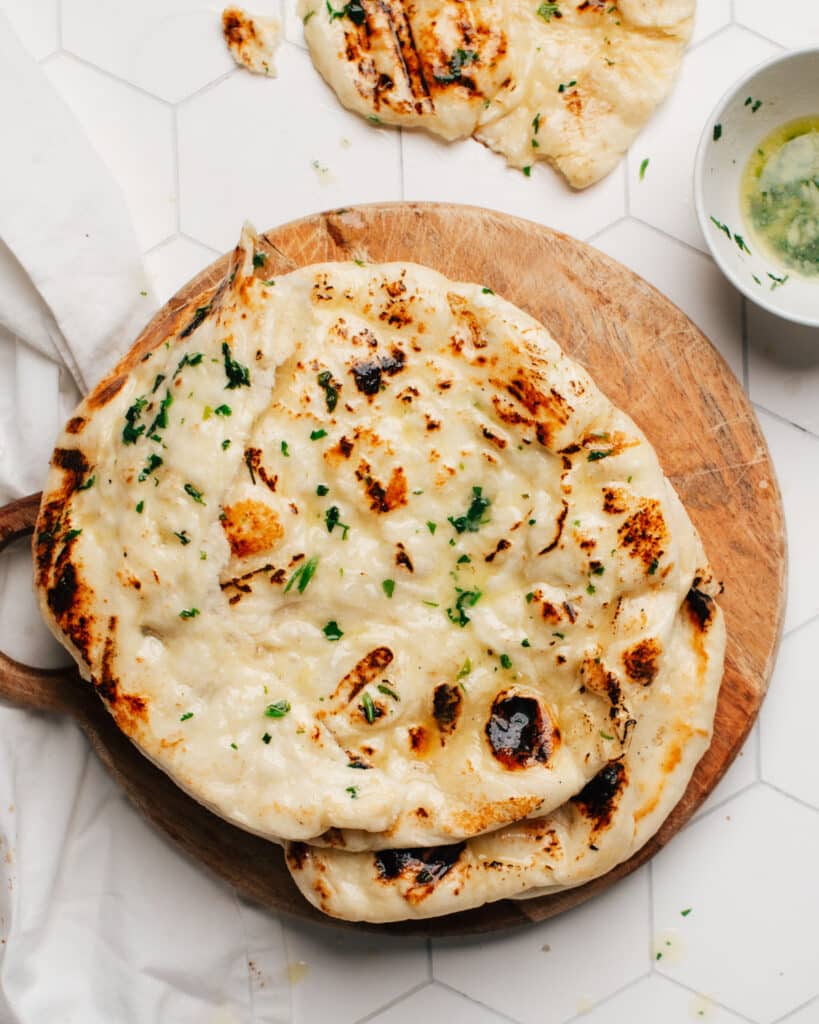
What’s the difference between naan and roti?
The short answer is that naan is made with all-purpose flour, yeast, and dairy, and is cooked in a tandoor, resulting in a soft, chewy texture.
Roti, on the other hand, roti is made with whole wheat flour and water, cooked on a flat skillet, leading to a lighter, pliable texture.
But there’s much more to it than that.
Read on to find out!
Roti Vs. Naan: The Key Differences
Roti and naan are super popular flatbreads, and I’ve been perfecting my technique for my both since I met my Indian husband as a teen.
Each is delicious, and each has it’s own place on the Indian bread scene.
Let’s explore the major differences between roti and naan.
Roti vs Naan: Ingredients and Preparation
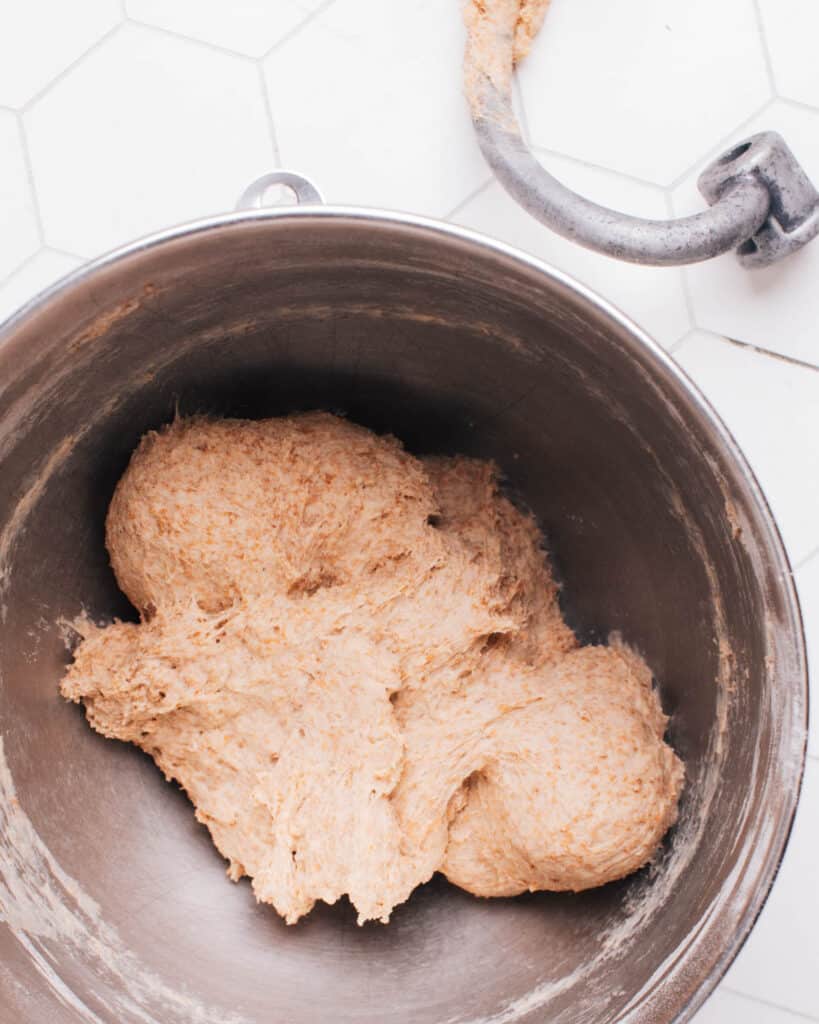
Roti:
- Roti is traditionally made from whole wheat flour, known as atta, and water. Sometimes a bit of salt is added. I always add salt to my super soft roti recipe, I find it really makes the flavor shine.
- The dough is kneaded until smooth, rested, and then rolled into thin circles before being cooked.
- Roti is typically cooked on a tawa, a type of Indian flat skillet, and doesn’t require an oven.
- It’s often finished over a direct flame, which encourages it to puff up dramatically.

Naan:
- Naan is typically made from all-purpose flour, and its dough includes yeast and dairy products like yogurt, milk, and sometimes eggs, which contribute to its distinct texture and taste.
- The dough is kneaded, left to rise, and then rolled into an oval or teardrop shape.
- Naan is traditionally cooked in a tandoor, a cylindrical clay or metal oven, which gives it a unique charred flavor. You’ll love my viral butter naan recipe that mimics all the characteristics of a tandoor-cooked naan, but is made on the stove!
Roti vs Naan: Texture and Flavor
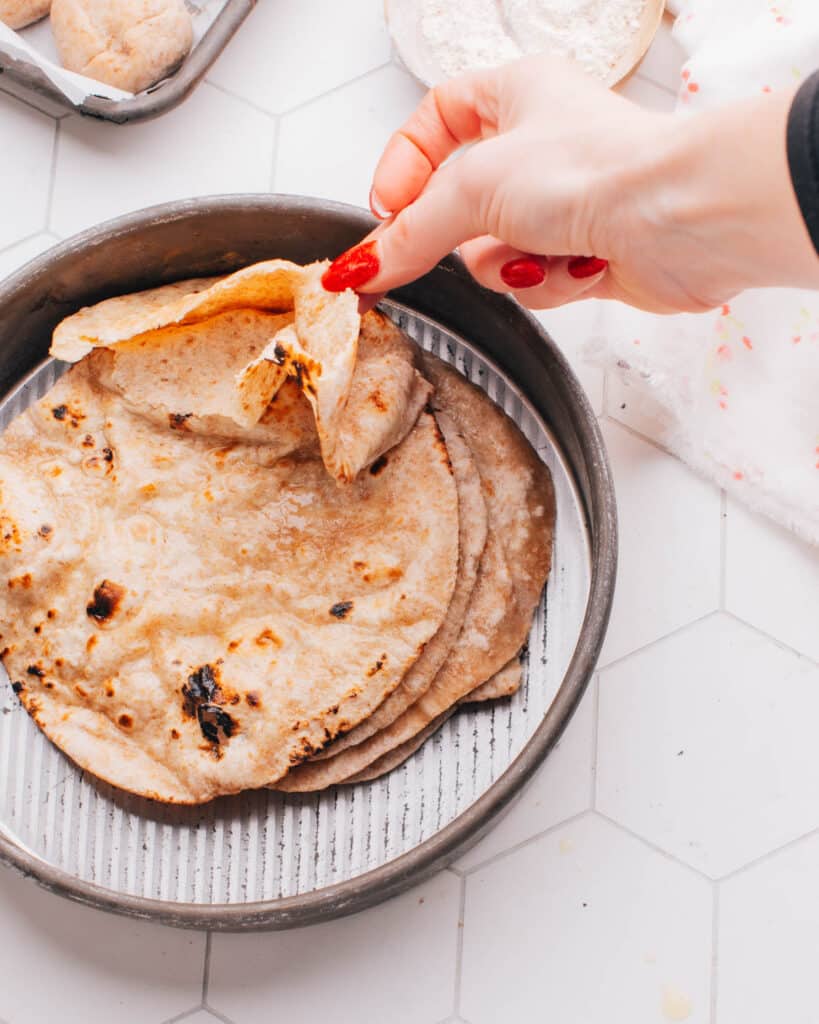
Roti:
- It’s usually soft, pliable, and light. The whole wheat flour gives it a hearty, nutty flavor.
- Roti can be used as a wrap or torn into pieces to scoop up other dishes.

Naan:
- Naan is known for its soft, chewy interior and a slightly crisp exterior.
- The fermentation and dairy products in the dough add a slight tang and richness to its flavor.
Roti vs Naan: Regional Variations

Roti:
- Roti is a staple in many households across South Asia and is consumed daily in countries like India and Pakistan.
- It’s often served with cooked vegetables, lentils, chana masala or meats.
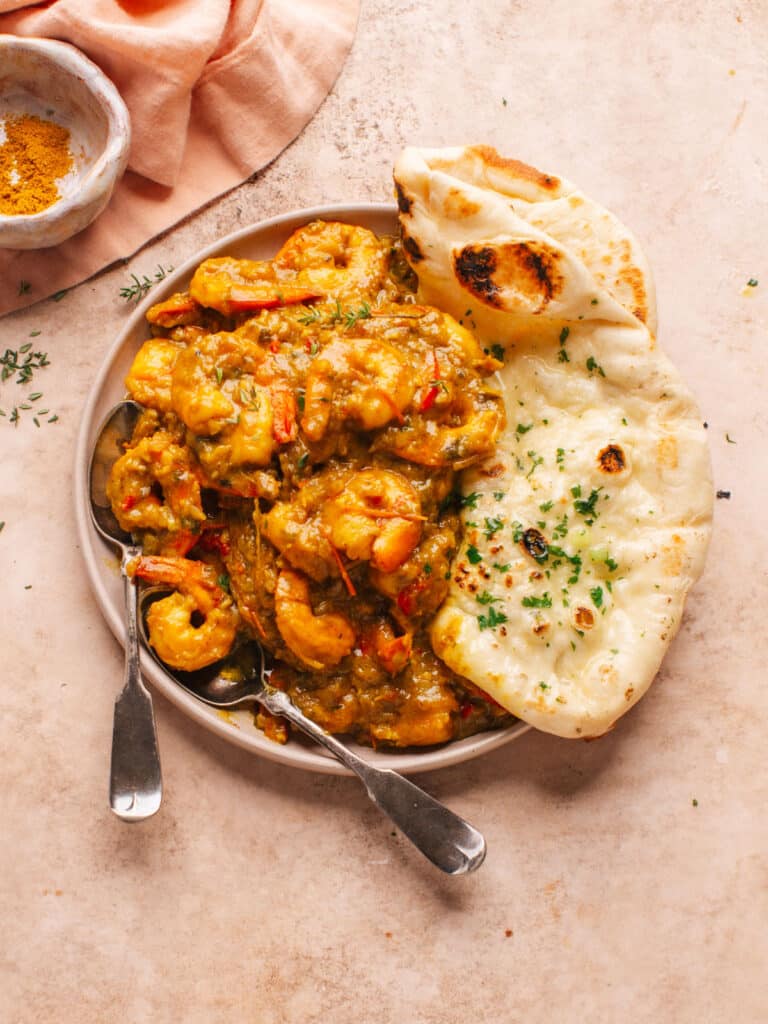
Naan:
- Naan is more commonly found in restaurants than in home cooking, particularly in Western countries.
- It’s often served with richer, heavier dishes like curries and is sometimes stuffed (like with potatoes for aloo naan, pictured below, or with ground meat, for keema naan).
Roti vs Naan: Cultural and Historical Significance
Roti:
- Roti is a pillar of home cooking and simplicity.
- My Indian mother-in-law would make them for us almost every day on our trips to India and when she visits.
- Served with simple dals (like her Masoor Dal), rotis are tucked into lunch tiffins and served on a regular basis.

Naan:
- Naan has a rich history too, often associated with royal feasts and special occasions.
- Its preparation in a tandoor and the use of refined flour and dairy products made it a luxury in the past.
- It’s considered more of a restaurant food now than a home-cooked food.
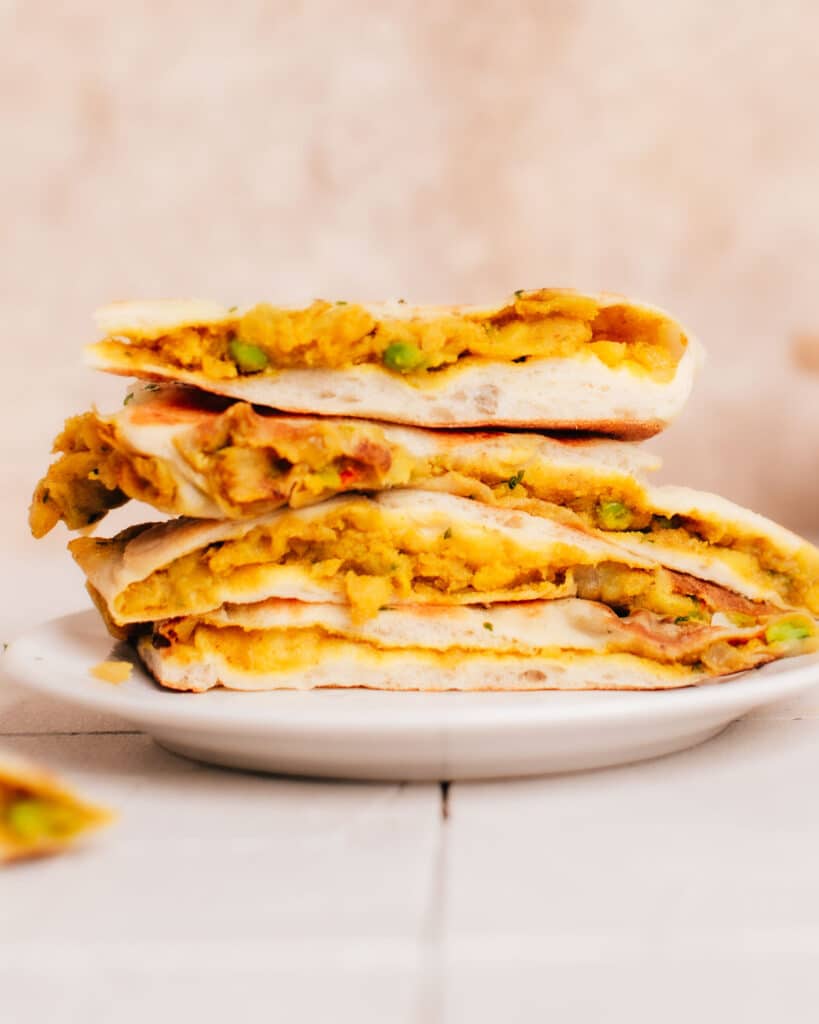
Roti vs Naan: Nutritional Differences
Roti, primarily made from whole wheat flour, generally offers more fiber, fewer calories, and less fat compared to naan, which includes all-purpose flour, yeast, and dairy products like yogurt or milk.
The additional ingredients in naan, while contributing to its richer flavor and texture, also increase its calorie and fat content, making roti a slightly healthier choice in terms of lightness and fiber.
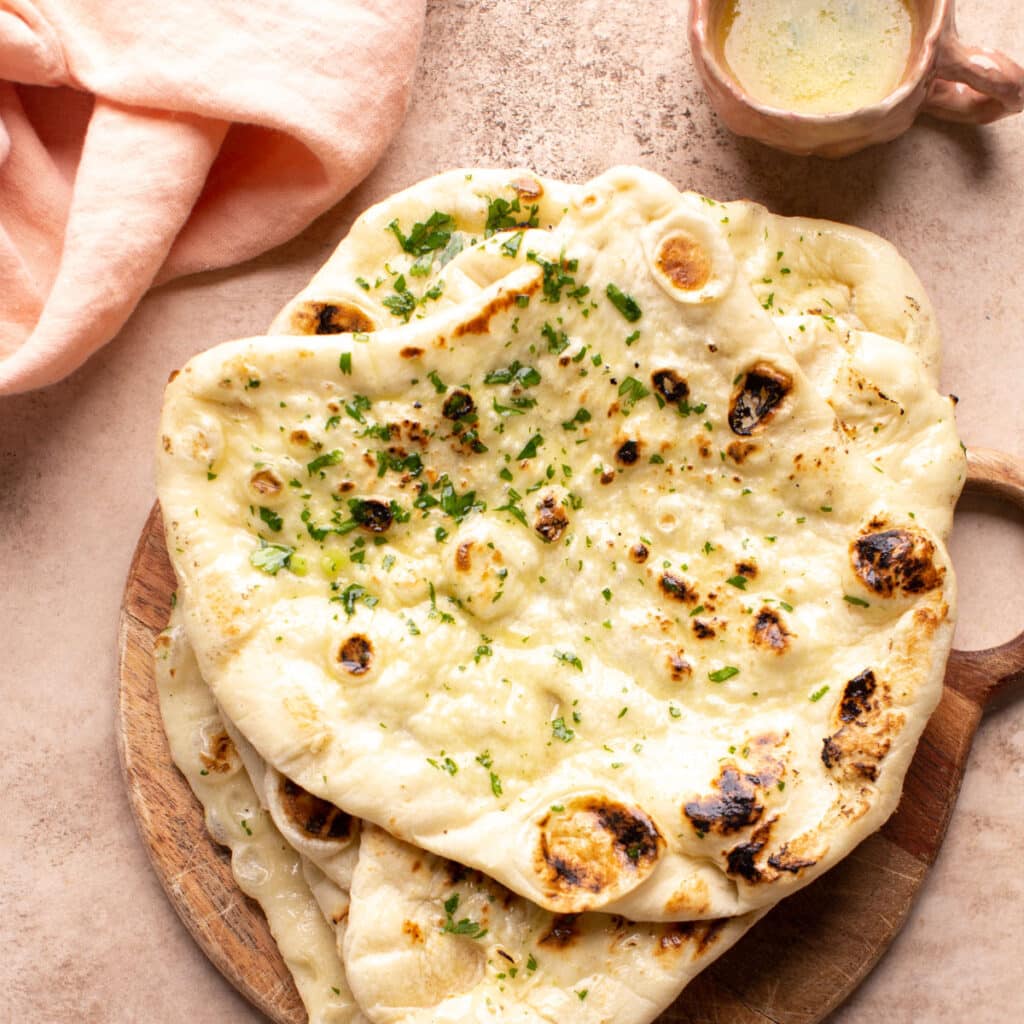
Nutrition Facts for Naan:
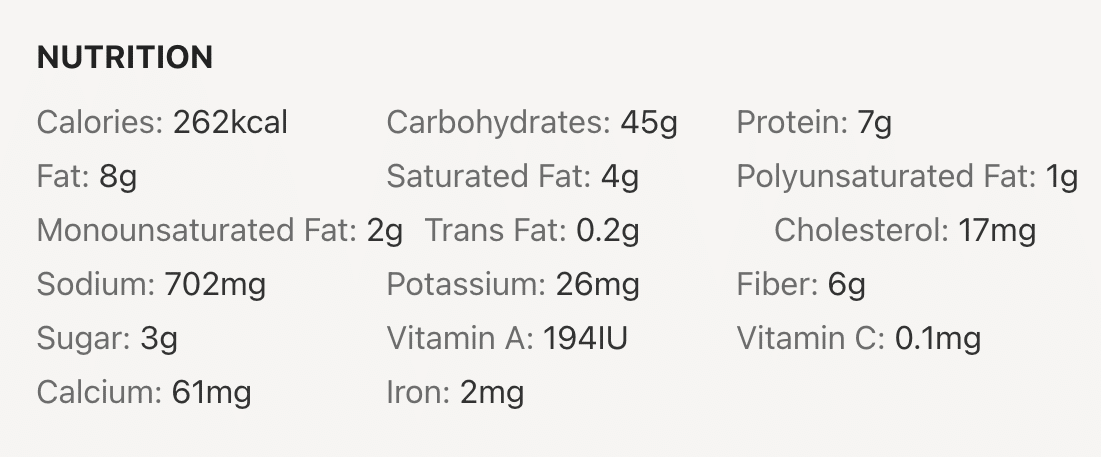
Values are based on this butter naan recipe using this nutrition calculator.
Nutrition Facts for Roti:

Quantities are based on this roti recipe using this nutrition calculator.
Why I Love Both
Both roti and naan are obsessively craveable in their own way.
Roti is a symbol of home cooking and being well fed by hands that love you.
Naan is soft and squishy comfort food used to mop up yummy butter chicken sauce on special occasions.
I wouldn’t want to live in a world without either.
Don’t miss these delicious flatbread recipes:
If you love flatbreads as much as I do, don’t miss my favorite recipes!
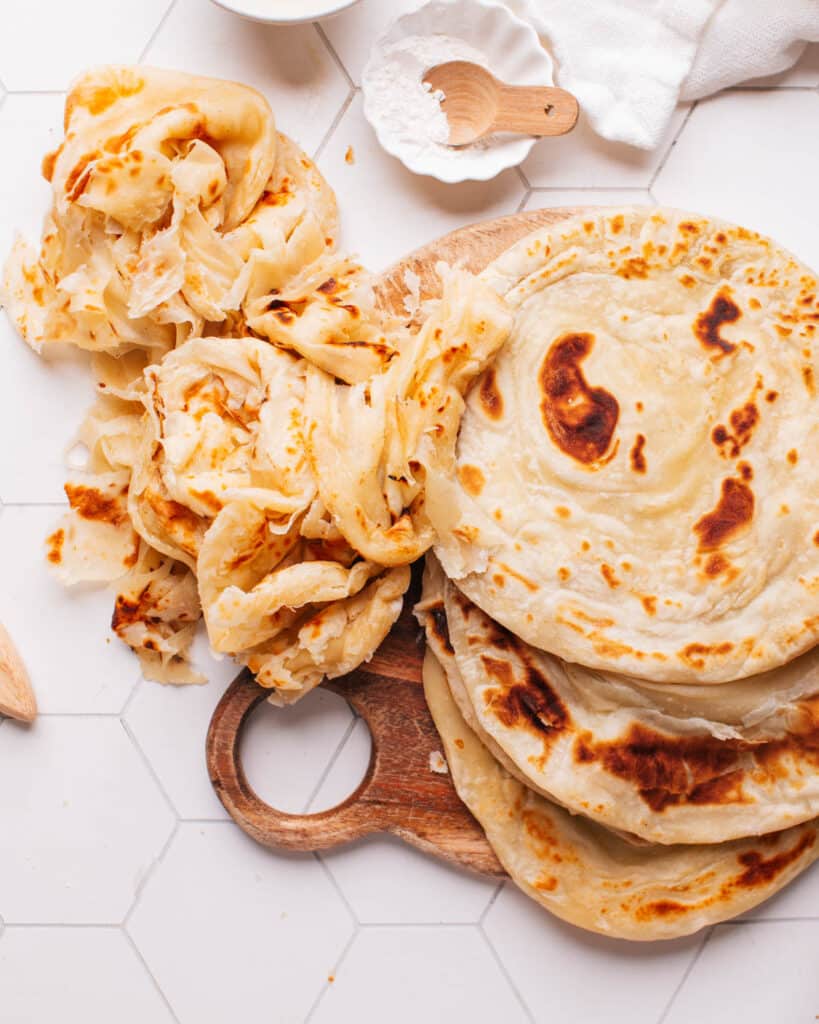
- Paratha (flaky layered flatbread)
- Butter naan (the super-viral Instagram recipe)
- Aloo naan (with a spicy potato stuffing)
- Kheema naan (filled with spiced ground meat)
- Roti (the staple recipe I’ve been perfecting for 20 years!)
- Fresh Flour Tortillas (an easy recipe to make homemade soft flour tortillas)
- Turkish Bread (fluffy flatbreads)
And don’t miss the great Paratha Vs Naan debate (my Indian husband weighs in!).








